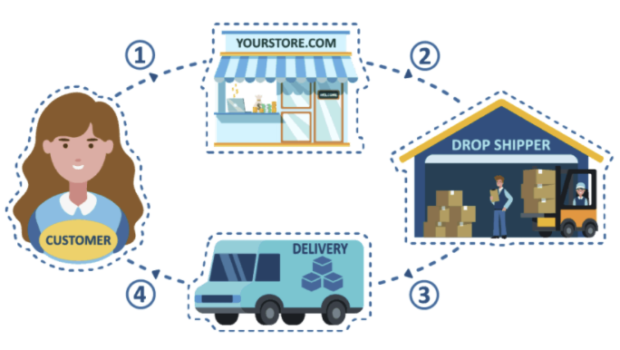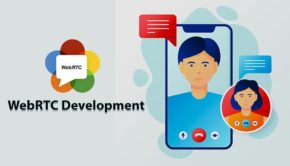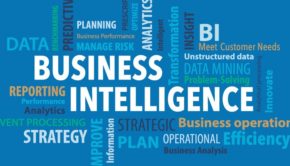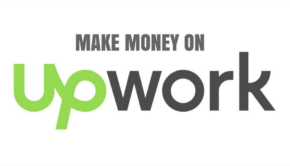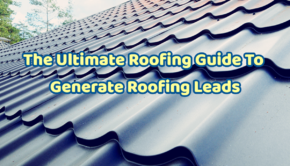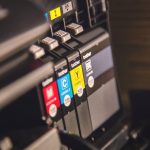Beginner Facebook Ads Strategy To Maximize Dropshipping Revenue
If you’re completely new to dropshipping and want to get a jump-start, this is the perfect place for you.
In this guide we’ll cover:
- What dropshipping is
- How to bring customers to your online store
- How to create an effective Facebook ads campaign
What Is Dropshipping?
If you’ve been browsing the internet for the past couple of years, you’ve probably seen or heard of the term “dropshipping”.
But what exactly is it?
Dropshipping is a type of eCommerce business, where you sell products online.
However, it is actually different from a traditional ecommerce store. Dropshipping allows you to sell goods without owning any inventory or shipping out products yourself.
Instead, dropshippers work with a third-party supplier that handles the inventory and ships the product directly to the customer.
Here’s the process laid out for you:
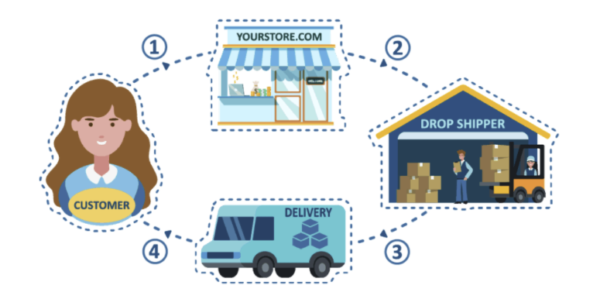
- A customer visits your online store and orders a product
- You forward the order information and shipping details to the supplier
- The supplier ships the product directly to the customer
- Customer receives the product
With dropshipping, you don’t have to go through the overwhelming hassle of managing inventory, packing products, and shipping them out.
The beauty of dropshipping is that it’s low-risk. Since you don’t have to invest any initial funds on inventory, you can quickly test a variety of products.
Furthermore, dropshipping has low capital requirements.
The only things you need to buy to get started are:
- Shopify Subscription ($30/month)
- Custom Domain ($10/year)
- Google Workspace Account ($6/month)
- Optional Applications ($10-20/month)
- Facebook Ads ($50-200)
As you can see, you can create an online business with less than $100.
Dropshipping has an extremely low barrier to entry and is beginner-friendly.
However, it’s important to know that dropshipping is competitive and you’ll need to work hard in order to build a successful store.
The biggest detriment to your success in dropshipping is treating it as a get-rich-quick scheme.
This couldn’t be farther from the truth.
Dropshipping is a legitimate business model that requires patience, strategy, and lots of hours at the computer.
This being said, let’s dive into how dropshippers get customers to visit their online store.
What Are Facebook Ads?
Simply put, Facebook ads is the platform that the majority of dropshippers use to get customers.
There are other platforms such as Google Ads, Tik Tok Ads, Snapchat Ads, and so forth.
However, the Facebook ads platform is still the most effective and advanced.
Why Use Facebook Ads?
There are dozens and dozens of reasons why you should use Facebook ads as an online marketer.
But, let’s discuss the most important reasons.
First of all, the main feature of the Facebook ads platform is its machine learning algorithm.
The Facebook ads algorithm helps Facebook find the best people to deliver your ads to.
It does this by collecting data of all the people that engage with your ad and tracks all the actions they perform.
The algorithm then creates profiles based on the users age, sex, location, interests, groups, etc.
Furthermore, the algorithm will start finding patterns between all the people who actually purchase items or add items to their cart.
It then finds people with similar attributes to deliver the ads to.
Overall, you will be getting a better value for your ad dollars because of the Facebook ads algorithm.
Along with the Facebook ads learning algorithm, here are it’s other features:
- Massive Facebook Userbase – 1.79 billion average daily users
- Pinpoint Targeting – Ability to target audiences related to any niche
- Scaling – Ability to grow revenue
Facebook Ads Structure & Mechanics
The Facebook ads platform can be a little overwhelming at first. However, once you understand what each section is, everything will start making sense.
Here’s what your ads manager will look like:
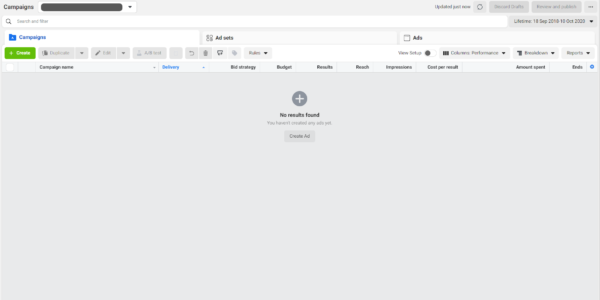
The Facebook ads structure is broken down into campaigns, ad sets, and ads.
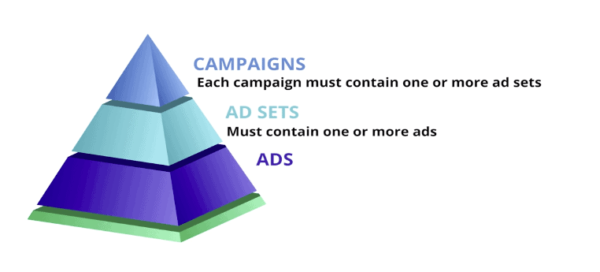
Campaigns
The campaign is where you will set the objective for your advertisements.
For example, you can choose from brand awareness, reach, traffic, app installs, conversions, etc.
However, we always choose the objective “Conversions” for all of our campaigns.
Ad Set
The ad set is where you will choose which audience to display your advertisements to. Furthermore, you’ll schedule when you want the ad campaign to go live.
Ad
The ad is where you’ll input the photo/video you want to promote. Furthermore, this is where you will type out your header and all the text associated with your ad post.
Low Budget Facebook Ads Strategy
Now that you understand the importance of using Facebook ads for your dropshipping store, let’s dive into strategy.
Every successful Facebook ads strategy has a few phases, starting with testing first.
Testing is when you’re targeting cold audiences and using new creatives. The goal of testing is to see if your selected audiences and creatives are profitable.
After the testing campaign goes well, you’ll want to create a similar campaign to confirm the results of the first phase.
If the confirmation campaign also returns good results, the last step is to utilize the data you’ve collected and start scaling your campaigns.
This guide will feature our low budget ad strategy that all beginners can try out.
But before we get started, it’s important to know that this strategy works best for products under $30.
Since this is a low budget strategy, higher priced products end up with higher priced advertisements.
For this reason, find a product you can sell for $30 or under.
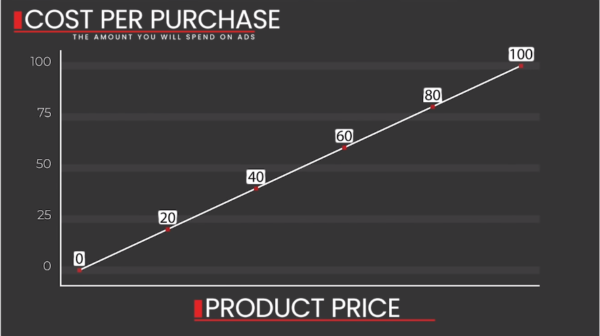
Phase 1
Starting with Phase 1, we will be trying to find a good audience and a good ad creative.
Start by creating a new campaign in your ads manager.
Next, set the Campaign Objective to Conversions.
Click “Create Campaign”.
Afterwards, select your Ad Set and duplicate it 9 times.
Now, select all 10 Ad Sets and set the:
- Conversion Event: Purchase
- Budget: $3/Day
- Schedule: Start at Midnight the Next Day
- Location: Your Preference (Based on your own business)
- Age: 18-65+
- Language: English (All)
- Placement: Auto
Lastly, you’ll want to set the “Detailed targeting”. The targeting will depend on your store’s niche. Type in any keywords related to your products and see what comes up.

We recommend finding audiences with 10 million people or more.
Furthermore, make sure to select a unique audience for each of the 10 ad sets.
In the end, you’ll have 10 different ad sets with 10 different audiences.
Lastly, click to edit your ad.
For our strategy, you’ll want to make 2 different creatives. These can either be images or videos. Each ad set will have the same 2 creatives attached to it.
In the end, you’ll have:
- 1 Campaign
- 10 Ad sets
- 20 Ads
Next, you can finally publish your ads and let them run for 24 hours. After 24 hours, go into your Facebook ads manager and look at results. Since we are using a low budget strategy, we want to turn off underperforming ads as quickly as possible.
So, find the data of your 2 creatives and turn any of them off if the Cost per Click is over $1.
Now, look at the data of your ad sets and follow these guidelines:
- After 2 days, turn off any ad sets without an Add to Cart
- After 3 days, turn off any ad sets with zero purchases
Your goal is to have at least 1 profitable ad creative and 2 profitable ad sets.
If you find your campaign is underperforming and one of your ads or ad sets are profitable, you will need to start over with new creatives and audiences.
Now, with your profitable ad sets and ads, it’s time for phase 2.
Phase 2
The goal of Phase 2 is to verify the consistency of the results from Phase 1.
We will accomplish this by testing interests related to the profitable interests from Phase 1.
For example, if the interest “Neck” was profitable from Phase 1, we’d type it into the search bar and then click “Suggestions”.

We recommend choosing audiences with over 5 million people.
Also, your goal is to have a total of 10 ad sets again, including the winning ad sets from Phase 1.
So, if you had 5 profitable ad sets from Phase 1, find 5 new audiences for Phase 2.
Now, create a brand new campaign using all the same settings from Phase 1. But this time, you will use the updated 10 ad sets.
Furthermore, duplicate the winning ad creative from Phase 1 and make sure each ad set has 2 creatives.
Once again, you should be left with: 1 campaign, 10 ad sets, and 20 ads.
Finally publish your Phase 2 campaign and let it run for a day.
Follow the same strategy we used in Phase 1 to turn off underperforming ad sets and ads.
After 3 days, you will need at least 2 ad sets with a purchase before moving onto Phase 3.
If not, you should start Phase 1 again.
Phase 3
This will be the last phase of testing in this Facebook ads strategy. The goal is to collect more data and build strong lookalike audiences.
Here’s what you need to do for Phase 3:
- Duplicate your winning ad sets from Phase 2 into a new campaign
- Enable “Campaign Budget Optimisation”
- Set the CBO budget for $90 a day
- Let the CBO run for 2 days
- Turn off the campaign if the Cost per purchase is $10 or more your target CPP
- If you turned off your campaign, go back to Phase 2 and test new creatives
- If your campaign CPP was good, look at the ad sets
- Turn off any ad sets that were unprofitable
If you have a profitable campaign and profitable ad sets, you can start scaling.
Start by doubling the CBO budget. If the doubled budget underperforms after a day, descale to your original budget.
Before moving on the Phase 4 scaling, you want to make sure you’ve spent over $500 total on your Facebook ads and have a profitable campaign.
Phase 4
Phase 4 is where you can start scaling your Facebook ads even more by using lookalike audiences.
Make 0-5% lookalike audiences for:
- FB Page/Post Engagement
- Pageview
- Viewcontent
- Viewed 75% of Video (if you’re using video ads)
With these lookalike audiences, run a campaign using the CBO strategy from Phase 3.
Monitor your results closely after 1 day and begin turning off unprofitable ads and ad sets.
At this point, you will have to calculate your own break-even Cost per Purchase based on the price of your product.
If you’re having success with scaling your campaigns, you can look to create 0-5% lookalike audiences for Add to Cart and Purchase.

